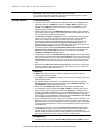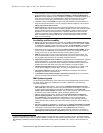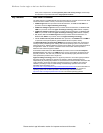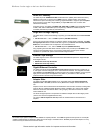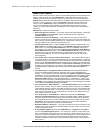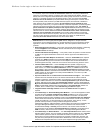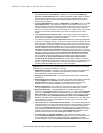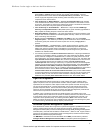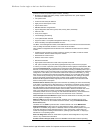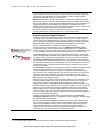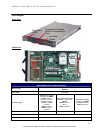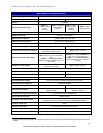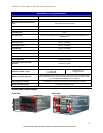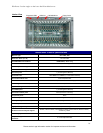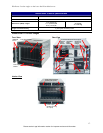
Workhorse 2-socket single- or dual-core Intel Xeon blade server
Please see the Legal Information section for important notices and information.
10.
provides a number of important system functions, including:
• Monitoring of system and battery voltage, system temperature, fans, power supplies,
processor and DIMM status
• Fan speed control
• Product ID and Family ID detection
• Highly secure remote power on/off
• System reset control
• NMI/SMI detection and generation
• System diagnostic LED control (power, HDD, activity, alerts, heartbeat)
• IPMI over LAN
• Proxy server support
• LAN messaging and alerting
• Local update of BMC firmware
• Support for IPMI v1.5 compliant management software (e.g., xCAT)
• Other mandatory and optional IPMI BMC functions
The BMC, via the management module, alerts IBM Director to anomalous environmental factors,
such as voltage and thermal conditions—even if the server has failed.
Other systems management features offered for the combination of blade server and chassis
include:
• Predictive Failure Analysis for system processors, memory and HDDs, as well as chassis
switch modules, blower modules and power modules
• Web-based out-of-band control
• Windows “blue screen” capture
• Remote virtual media
• High-speed remote redirection of PCI video, keyboard and mouse
• SSL (Secure Socket Layer) and LDAP (Lightweight Directory Access Protocol) support
In order to put control of processor power-saving features at the fingertips of administrators, IBM
developed PowerExecutive. PowerExecutive is designed to take advantage of new processor
features, such as balancing the performance of the system according to available power input. It
provides the ability to plan and predict power consumption based on your BladeCenter hardware
configuration. It also allows you to reduce the infrastructure required for redundancy, by using
fewer servers on smaller power feeds and potentially lowering your overall data center support
costs. It does this by inventorying all components at the blade level, then adding up the power
draw for each blade and tracking that usage. In failure mode, PowerExecutive (through the
BladeCenter Management Module) might request that certain blades in each domain throttle
down to reduce power consumption.
Automatic Server Restart (ASR) helps reduce downtime by restarting the server automatically
in the event of a system lockup. ASR technology is a combination of hardware circuitry tied into
the server’s system reset function and a device driver. As long as the server continues running,
the ASR watchdog timer will keep being reset, but if the operating system crashes or the
hardware freezes somehow the ASR software will be unable to reset the hardware timer. If the
timer is not reset within five minutes, it automatically triggers the ASR hardware, which
immediately restarts the server (and logs an ASR event with IBM Director). These features are
designed so that no more than five minutes can pass before the server is restarted.
Text and Graphics Console Redirect support allows the administrator to remotely view HS20
text and graphics messages over serial or LAN.
Wake on LAN permits the HS20 to be remotely powered on if it has been shut off. Once
powered up, the server can be controlled across the network, using the Preboot Execution
Environment (PXE).
Like Wake on LAN, PXE is system firmware. It allows software such as the IBM Remote
Deployment Manager to take control of a system before the BIOS, operating system or
applications are loaded (using Wake on LAN/PXE) and lets an administrator perform many low-
level tasks remotely that would otherwise require a visit to each system. These tasks may
include such things as formatting a hard disk drive, updating system firmware, or deploying a
Windows or Linux operating system.
Real Time Diagnostics allows an administrator to perform remote diagnostics on any blade
server or any chassis without downtime.
Predictive Failure Analysis (PFA)
enables the MM/aMM and the BMC to detect impending



